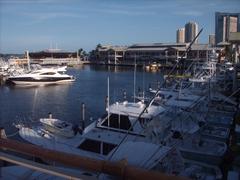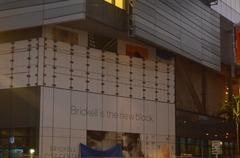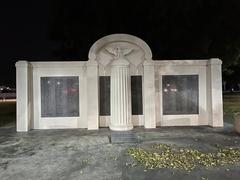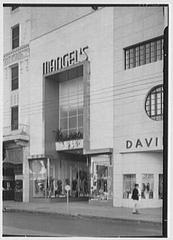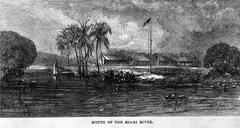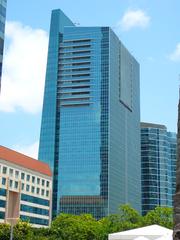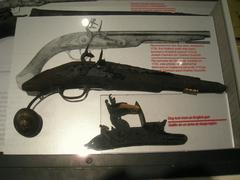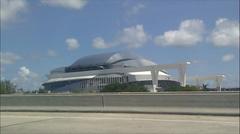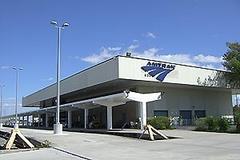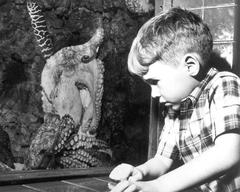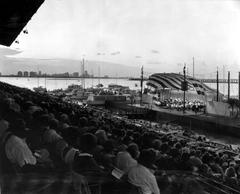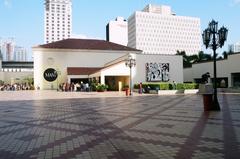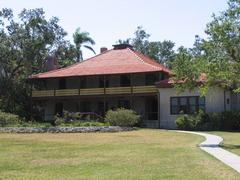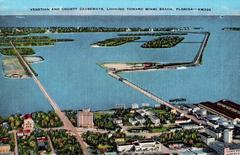
Federal Detention Center Miami Visiting Hours, Tickets, and Guide to Miami Historical Sites
Date: 04/07/2025
Introduction: Understanding the Federal Detention Center Miami
Located in the bustling heart of downtown Miami, the Federal Detention Center Miami (FDC Miami) serves as a critical hub within the federal justice system. Established in 1995, this facility was designed to meet the increasing demand for federal detention services in South Florida, especially given Miami’s role as an international port and financial center. FDC Miami primarily houses inmates involved in federal cases—ranging from drug trafficking and immigration offenses to white-collar crimes—and acts as a vital link between the courts and law enforcement agencies. The center is known for its robust security procedures and its proximity to the U.S. District Court for the Southern District of Florida, which allows for efficient inmate transfers and judicial coordination. For those seeking to visit, it’s essential to understand the facility’s strict access protocols and the broader context of its role in the federal penal system (Federal Bureau of Prisons; JailAid).
Table of Contents
- Introduction
- Establishment and Historical Context
- Role in the Federal Justice System
- Facility Operations and Security
- Rehabilitation and Inmate Services
- Visitor Information
- Frequently Asked Questions (FAQs)
- Summary
- Visuals and Additional Resources
Establishment and Historical Context
FDC Miami was constructed in 1995 as a response to the growing need for a secure federal detention facility in South Florida (Wikipedia; JailAid). Miami’s prominence as a major port and financial center contributed to an uptick in federal cases. The center was built to accommodate up to 1,259 inmates, though its population has at times exceeded this capacity (ICE Attorney Guide). Its location next to the U.S. District Court for the Southern District of Florida streamlines legal processes and underscores its pivotal role in federal judicial operations (InmateAid).
Role in the Federal Justice System
Pretrial Detention and Judicial Support
FDC Miami operates as an administrative-security facility. It houses male and female inmates primarily awaiting trial, sentencing, or transfer. Most detainees are under the jurisdiction of the U.S. Marshals Service, participating in federal court proceedings in the Southern District of Florida (ICE Attorney Guide). Some inmates serve short sentences here or await placement in other institutions.
Forensic and Mental Health Evaluations
As a designated site for outpatient forensic studies, FDC Miami conducts court-ordered mental health assessments, such as competency and criminal responsibility evaluations. The facility’s Psychology Services team ensures that inmates receive appropriate mental health care throughout their legal proceedings (ICE Attorney Guide).
Notable Inmates
FDC Miami has held several high-profile individuals, including members of the “Liberty City Seven,” rappers Kodak Black and Fat Joe, and Ponzi schemer Scott W. Rothstein (The Prison Direct; InmateAid). Their cases highlight the facility’s capacity to manage complex legal and security challenges.
Facility Operations and Security
Administrative Structure
Managed by the Federal Bureau of Prisons under the Department of Justice, FDC Miami is overseen by a Warden and supported by a trained staff dedicated to upholding security while ensuring humane treatment (Wikipedia).
Security Measures
The facility employs comprehensive security protocols, including regulated inmate movement, advanced surveillance systems, and rigorous visitor screening (JailAid). Security strategies are regularly updated to address emerging risks and maintain safety for staff, visitors, and inmates.
Rehabilitation and Inmate Services
FDC Miami offers a range of educational and rehabilitative programs, such as literacy classes, GED preparation, ESL courses, and distance-learning opportunities (Simple Wikipedia). Vocational training helps prepare inmates for reintegration into society. Medical, dental, and mental health services are provided to meet the comprehensive needs of the inmate population (ICE Attorney Guide).
Visitor Information
Visiting Hours and Access
FDC Miami does not provide public tours; access is restricted to approved visitors, including family members and legal counsel. Visiting hours vary by housing unit and must be arranged in advance. All visitors are subject to strict security measures, including ID verification, dress code compliance, and thorough screening.
Scheduling a Visit
To schedule a visit, contact the facility directly or consult the Federal Bureau of Prisons official website for up-to-date procedures. Spontaneous or unscheduled visits are not allowed.
Location and Transportation
The center is located at 11251 NW 41st Street, Miami, Florida, adjacent to the federal courthouse. Public transportation and parking options are readily available, and directions can be found on official resources.
Nearby Attractions
Visitors to FDC Miami can explore several nearby attractions, including the Miami-Dade Federal Courthouse, Bayfront Park, and the Port of Miami, which offer an opportunity to experience the city’s legal and cultural scene.
Frequently Asked Questions (FAQs)
Can the public visit FDC Miami?
No, only approved individuals such as family and legal counsel may visit.
What are the visiting hours?
They vary and require advanced scheduling. Refer to the official website for current details.
What security measures apply to visitors?
All visitors must pass ID checks, metal detection, and adhere to dress and behavior guidelines.
Are public tours or events offered?
No, due to security and operational considerations.
How can I find more information about inmates or the facility?
Visit the Federal Bureau of Prisons website for inmate locator tools and facility details.
Visuals and Additional Resources
For photos, maps, and virtual tours (if available), visit the Federal Bureau of Prisons official site.
Explore More:
- Federal Bureau of Prisons
- U.S. District Court for the Southern District of Florida
- Miami Landmarks and Attractions
For curated guides and real-time updates, download the Audiala app.
Miami Freedom Tower: Visitor Guide to a Historic Landmark
Introduction
The Miami Freedom Tower stands as a powerful symbol of hope, freedom, and resilience. Often called the “Ellis Island of the South,” its Mediterranean Revival architecture and storied past make it an essential stop for anyone interested in Miami’s history and culture.

History and Cultural Impact
Originally built in 1925 as the headquarters of The Miami News, the Freedom Tower became a government processing center for Cuban refugees in the 1960s and 1970s, cementing its status as a cultural and historical icon. Today, it is a National Historic Landmark and serves as a museum and cultural center, hosting exhibitions and community events that celebrate Miami’s diverse heritage.
Visiting Hours, Admission, and Tours
- Hours: Tuesday–Saturday, 10 AM – 5 PM; Sunday, 12 PM – 5 PM; Closed Mondays and major holidays.
- Admission: $10 adults, $7 seniors (65+), free for children under 12.
- Tickets: Available online via the official Miami Freedom Tower website or at the entrance.
- Guided Tours: Offered daily at 11 AM and 2 PM, providing in-depth insights into the building’s history and significance.
Accessibility and Travel Tips
- Location: 600 Biscayne Boulevard, Miami, FL 33132.
- Getting There: Accessible via Metromover (Freedom Tower Station), Metrobus, and nearby parking garages.
- Accessibility: Fully wheelchair-accessible with elevators, ramps, and assistance for visitors with disabilities.
What to See and Nearby Attractions
- Museum Exhibits: Rotating art and history exhibits, including the permanent “Cuban Exile Experience.”
- Architecture: Mediterranean Revival design, bell tower, and stained glass windows offer excellent photo opportunities.
- Events: Art shows, lectures, and cultural festivals throughout the year.
Nearby Attractions:
- Bayside Marketplace
- Perez Art Museum Miami (PAMM)
- Bayfront Park
- HistoryMiami Museum
Visitor FAQs
Is the Freedom Tower family-friendly?
Yes, with interactive exhibits and programs suitable for all ages.
Are pets allowed?
Only service animals are permitted.
Can I host a private event here?
Yes, event rentals are available; contact administration for more information.
Is photography allowed?
Yes, but flash and tripods may be restricted during certain exhibitions.
Is parking available?
Paid parking is available nearby.
Practical Tips
- Arrive early for guided tours and to avoid crowds.
- Check the official Miami Dade College website for current exhibitions and events.
- Wear comfortable shoes, as there is some walking involved.
Plan Your Visit
For up-to-date information on visiting hours, exhibitions, and special events, visit the Freedom Tower’s official page. Explore the surrounding downtown area for a comprehensive Miami experience.
Download the Audiala app for guided tours, visitor tips, and exclusive content on Miami’s top monuments and attractions.
Summary: Key Takeaways and Additional Resources
FDC Miami remains a cornerstone of federal justice in South Florida, expertly balancing security, inmate welfare, and judicial support. While public access is limited, those with approved visitation can maintain vital connections with inmates. The center’s location and operational focus make it integral to Miami’s legal and civic landscape, with nearby cultural landmarks like the Freedom Tower offering enriching experiences for visitors to the area. For further information, consult official sources and plan your visit to Miami’s historical sites thoughtfully (Federal Bureau of Prisons; InmateAid).
References
- Federal Bureau of Prisons – FDC Miami
- JailAid – FDC Miami
- ICE Attorney Guide – FDC Miami
- InmateAid – FDC Miami
- Wikipedia – FDC Miami
- Miami Freedom Tower – Miami Dade College
- Miami City – Freedom Tower Information
- Miami and Beaches – Attractions



